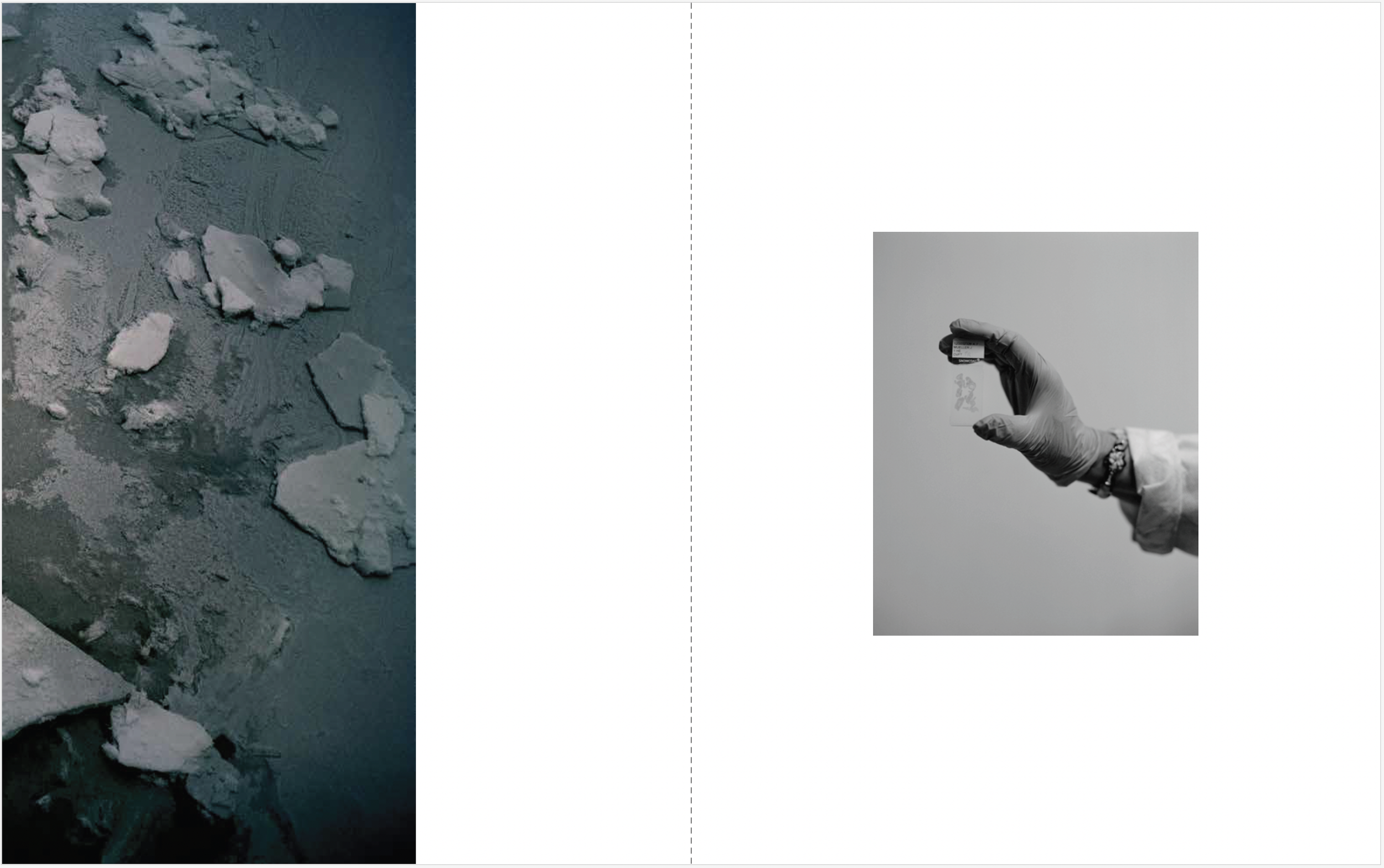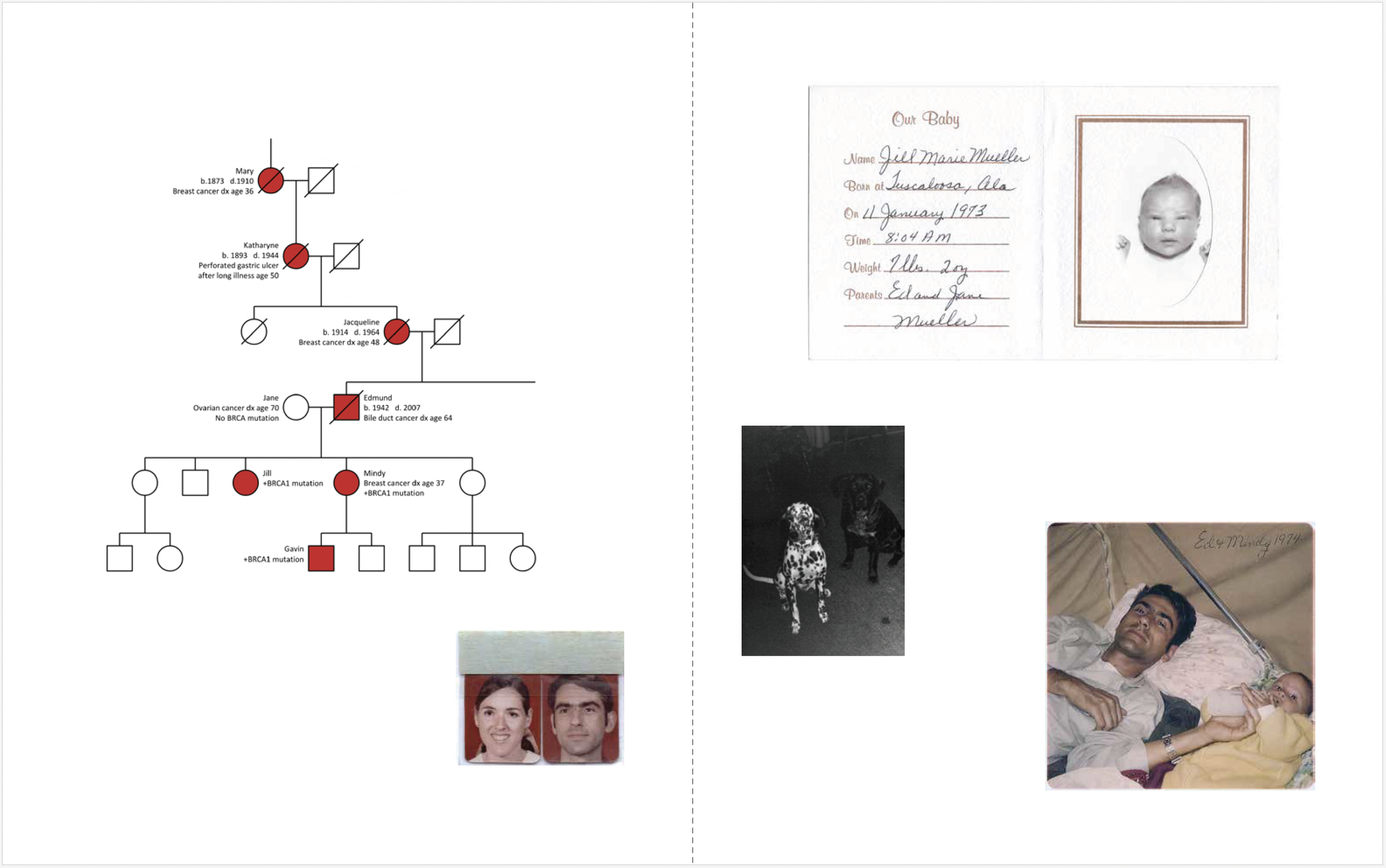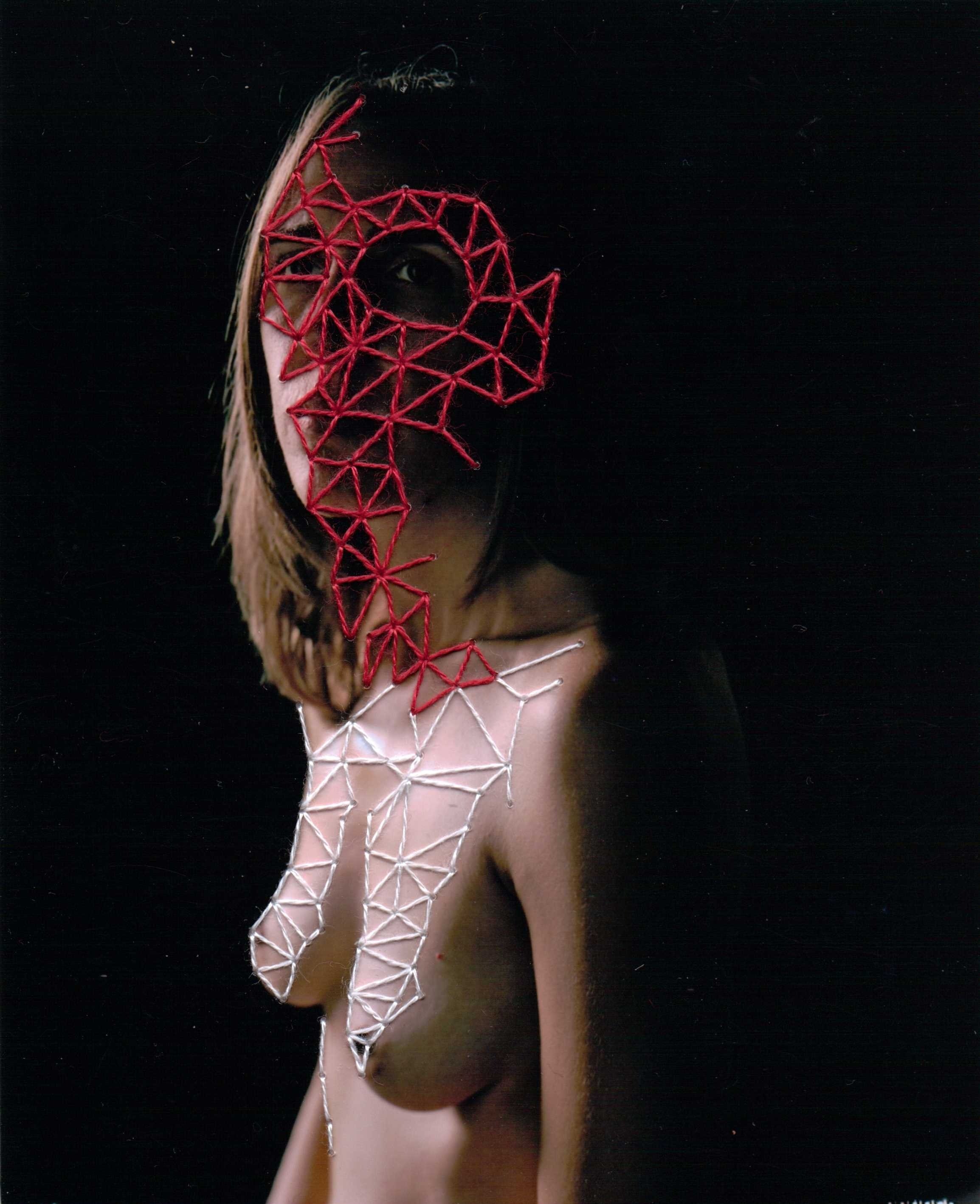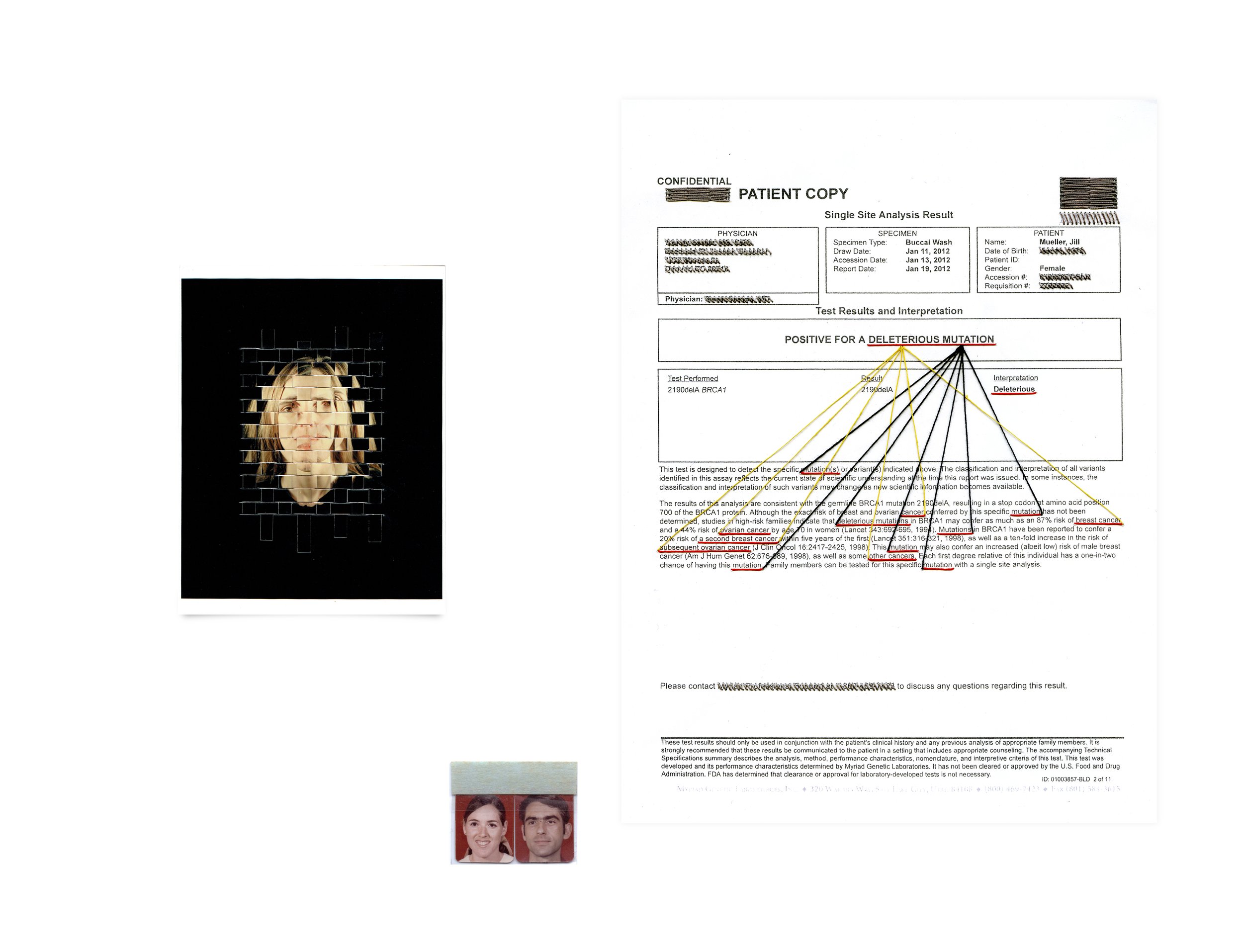See me through this
In 2012 I tested positive for a breast cancer gene (BRCA) mutation. I had just turned 39 and was watching my younger sister suffer chemotherapy treatment for aggressive breast cancer; she too had tested positive for this mutation. Women with a BRCA1 mutation carry up to 87% risk of developing breast cancer and up to 46% risk of developing ovarian cancer. The recommended course of action includes removing our breasts, ovaries and fallopian tubes while still healthy to prevent cancer from developing. I chose to undergo those surgeries.
Early in my medical process, I invited photographer Maja Daniels to accompany me on what I knew would be a physically and emotionally transformative journey. What began with writing, conversations, research and Maja’s photographs of my hospital appointments evolved into more creative explorations in an art studio. As a patient, I wanted to understand the science behind the process I was entering into, and what would happen to my body. As artists, Maja and I wanted to visualise the emotional and mental transformation that takes place alongside the physical one. We hoped to draw out the bigger questions and deeper experience of a patient living in the world to allow them to sit alongside the clinical medicalisation of the body.
Book dummy
Over several years, Maja and I explored the complexity of the preventive choices I made and my experience as a patient beyond the hospital—the often prolonged, internal process that takes place from the making of a difficult decision through to accepting your new self. The resulting work merges creative non-fiction with photography, archive imagery and creative interventions. We’ve sequenced this living archive as a book we hope to publish. The small selection below gives a sense of the book dummy we’ve made.
Stitched images
Maja asked me to respond to some of her images, and I found my way to stitching into them with thread. The piercing of the paper was quite raw and visceral, painful even – reminding me of the surgical interventions made to my body. But through this physical creative engagement, I began to reclaim ownership over some of the more challenging moments within my medical journey, moments in which we hand over control to medical staff when we are in their care and environment. This creative engagement allowed room for me to develop a critical voice about my process as a patient, and a safe space as an artist to express that voice. Over time, as my relationship to the events I had experienced evolved, I began to reshape my own medical narrative. Here are a selection of those images.
Text-image overlays
I love what interactions between text and images can do for one another. As I thought about exhibiting the project, I wanted to bring some of my short texts to the wall in a way that focused on the text whilst keeping them connected to the images that Maja and I made together in the studio. I typed six different passages on tracing paper and sandwiched glass between the paper and Maja’s photographs, creating a bit of haze and dimension between the words and images I linked them to. The paper became like a skin for all that it contained.
This is not the kind of project that comes to an end. I go back to it from time to time, and work with the archive of images and hospital documents in different ways. Anatomy of a Choice grew out of the work I’d done with Maja into a fully formed installation. Other pieces have emerged too, like Deleterious, the collage below, and I’m certain to continue to add to this project in the future.
































